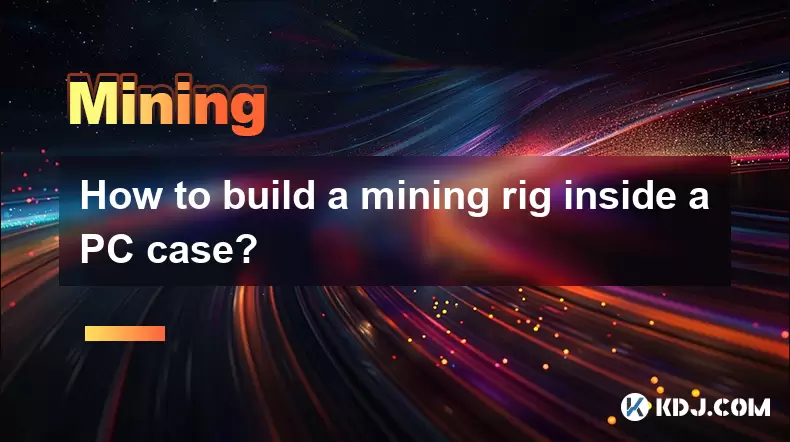-
 Bitcoin
Bitcoin $117500
2.15% -
 Ethereum
Ethereum $3911
6.19% -
 XRP
XRP $3.316
10.79% -
 Tether USDt
Tether USDt $1.000
0.01% -
 BNB
BNB $787.2
2.24% -
 Solana
Solana $175.2
4.15% -
 USDC
USDC $0.9999
0.00% -
 Dogecoin
Dogecoin $0.2225
8.40% -
 TRON
TRON $0.3383
0.28% -
 Cardano
Cardano $0.7868
6.02% -
 Stellar
Stellar $0.4382
9.34% -
 Hyperliquid
Hyperliquid $40.92
7.56% -
 Sui
Sui $3.764
7.63% -
 Chainlink
Chainlink $18.48
10.66% -
 Bitcoin Cash
Bitcoin Cash $582.1
1.88% -
 Hedera
Hedera $0.2601
6.30% -
 Avalanche
Avalanche $23.33
4.94% -
 Ethena USDe
Ethena USDe $1.001
0.02% -
 Litecoin
Litecoin $122.3
2.04% -
 UNUS SED LEO
UNUS SED LEO $8.969
-0.27% -
 Toncoin
Toncoin $3.339
0.86% -
 Shiba Inu
Shiba Inu $0.00001287
4.30% -
 Uniswap
Uniswap $10.43
7.38% -
 Polkadot
Polkadot $3.861
5.08% -
 Dai
Dai $1.000
0.02% -
 Bitget Token
Bitget Token $4.513
3.41% -
 Monero
Monero $267.7
-6.18% -
 Cronos
Cronos $0.1499
4.14% -
 Pepe
Pepe $0.00001110
5.15% -
 Aave
Aave $284.9
8.28%
Why is the cooling design of graphics cards important for mining?
Effective GPU cooling is crucial for cryptocurrency mining; preventing overheating maintains optimal hash rates, extends GPU lifespan, and reduces energy consumption, ultimately maximizing profitability.
Mar 11, 2025 at 09:24 am

Key Points:
- High-intensity cryptocurrency mining generates significant heat, potentially damaging GPUs.
- Effective cooling prevents thermal throttling, maintaining optimal hash rates and mining efficiency.
- Cooling solutions range from basic air coolers to advanced liquid cooling systems, each with varying costs and performance.
- Poor cooling can lead to reduced lifespan, increased energy consumption, and ultimately, lower profitability.
- Choosing the right cooling solution depends on the GPU, mining environment, and budget.
Why is the cooling design of graphics cards important for mining?
Cryptocurrency mining, particularly with Proof-of-Work algorithms, is a computationally intensive process. Graphics cards (GPUs), with their parallel processing capabilities, are the workhorses of this operation. However, this intense processing generates a substantial amount of heat. Without adequate cooling, these GPUs risk overheating, leading to a cascade of negative consequences.
The primary concern is thermal throttling. When a GPU surpasses its safe operating temperature, its internal mechanisms automatically reduce its clock speed to prevent damage. This directly translates to a lower hash rate, meaning fewer cryptocurrencies mined per unit of time, significantly impacting profitability. The reduction in performance can be substantial, rendering a poorly-cooled system far less efficient.
Beyond immediate performance loss, inadequate cooling drastically shortens the lifespan of the GPU. Constant high temperatures degrade the components, accelerating wear and tear. This leads to premature failure, requiring expensive replacements and interrupting the mining operation. The cost of replacing a failed GPU can quickly outweigh the savings from using a less effective cooling system.
Furthermore, inefficient cooling contributes to higher energy consumption. When a GPU throttles due to heat, it may draw more power to compensate for the reduced clock speed, negating any potential energy savings. The overall energy bill for the mining operation will increase, diminishing profits.
Choosing the appropriate cooling solution is crucial for maximizing the return on investment in mining hardware. The choice depends on several factors, including the specific GPU model, the ambient temperature of the mining environment, and the budget available.
Cooling Solutions for Mining GPUs:
Several cooling solutions exist, each with its advantages and disadvantages:
- Air Cooling: This is the most basic and often the most affordable option. Passive air coolers rely on the natural convection of air, while active coolers utilize fans to dissipate heat. Active air coolers are more effective but generate noise.
- Liquid Cooling: Liquid cooling systems use a liquid coolant to transfer heat away from the GPU. They offer superior cooling performance compared to air cooling, allowing for higher overclocks and sustained hash rates. However, they are more expensive and complex to set up. This includes AIO (All-in-One) liquid coolers which are pre-assembled and easier to install, and custom loop systems offering the greatest flexibility and cooling capacity, but also higher complexity and cost.
- Immersion Cooling: This cutting-edge technique involves submerging the entire GPU in a dielectric coolant. This offers exceptional cooling capabilities, enabling extreme overclocking and exceptionally high hash rates. However, it's currently expensive and requires specialized equipment.
Regardless of the cooling method chosen, regular maintenance is vital. This includes cleaning dust buildup from fans and heatsinks (crucial for air-cooled systems) and monitoring coolant levels (for liquid-cooled systems). Neglecting maintenance can negate the benefits of even the best cooling systems.
Specific Considerations:
The case design itself also plays a critical role. A well-ventilated case with adequate airflow is essential for optimal cooling, regardless of the chosen cooling solution for the GPU. Poor case airflow can hinder the effectiveness of even the best GPU coolers. Consider cases designed specifically for mining rigs, which often feature multiple fan mounts and optimized airflow paths.
Overclocking, while potentially increasing hash rates, increases heat generation. Careful monitoring of temperatures and adjustments to overclock settings are crucial to prevent overheating. It's advisable to start with conservative overclocks and gradually increase them while closely monitoring temperatures.
Frequently Asked Questions:
Q: Can I use a standard CPU cooler for my GPU? A: No. GPUs require significantly more cooling than CPUs due to their higher power consumption and heat output. GPU coolers are designed specifically for the heat dissipation needs of GPUs and are not interchangeable.
Q: How often should I clean my GPU cooler? A: The frequency depends on the environment, but at least every few months is recommended for air-cooled systems. Dust buildup significantly reduces cooling efficiency. For liquid cooling systems, check coolant levels regularly and consult the manufacturer's guidelines for maintenance.
Q: What happens if my GPU overheats? A: Overheating can lead to thermal throttling (reduced performance), permanent damage to the GPU, and even complete failure. In severe cases, it can cause a fire hazard.
Q: Is liquid cooling necessary for mining? A: Not necessarily. Effective air cooling can suffice for many mining setups, particularly in cool environments. However, liquid cooling offers superior performance and is often preferred for high-end GPUs or overclocking.
Q: How can I monitor my GPU temperature? A: Most GPU manufacturers provide monitoring software, or you can use third-party tools like MSI Afterburner or HWMonitor to track GPU temperatures in real-time.
Disclaimer:info@kdj.com
The information provided is not trading advice. kdj.com does not assume any responsibility for any investments made based on the information provided in this article. Cryptocurrencies are highly volatile and it is highly recommended that you invest with caution after thorough research!
If you believe that the content used on this website infringes your copyright, please contact us immediately (info@kdj.com) and we will delete it promptly.
- Stablecoins, Hong Kong, and On-Chain Finance: Navigating the Regulatory Maze
- 2025-08-08 12:30:12
- Tron's Sell-Off Spurs Altcoin Shift: What's Next for TRX?
- 2025-08-08 08:30:12
- Euler, DeFi, and Coinbase: A New York Minute on the Latest Buzz
- 2025-08-08 12:30:12
- RUVI Presale: Is the Growth Potential Real?
- 2025-08-08 09:10:12
- Sleep Token's US Takeover: Thornhill Rides the 'Even In Arcadia' Wave
- 2025-08-08 08:30:12
- FTT Token's Wild Ride: Creditor Repayments vs. Market Drop - A New Yorker's Take
- 2025-08-08 07:10:12
Related knowledge

What is "proof-of-work" and how does it relate to mining?
Aug 07,2025 at 02:03pm
Understanding the Concept of Proof-of-WorkProof-of-work (PoW) is a consensus mechanism used in blockchain networks to validate transactions and secure...

What are the differences between mining on Windows vs. Linux?
Aug 06,2025 at 11:29pm
Overview of Cryptocurrency Mining PlatformsCryptocurrency mining involves using computational power to solve complex cryptographic puzzles and validat...

How to use an old computer for cryptocurrency mining?
Aug 07,2025 at 12:42pm
Understanding the Feasibility of Using an Old Computer for MiningUsing an old computer for cryptocurrency mining may seem outdated, but it is still te...

Can you mine cryptocurrency using solar power?
Aug 07,2025 at 12:00am
Understanding the Basics of Cryptocurrency MiningCryptocurrency mining involves validating transactions on a blockchain network by solving complex cry...

How to build a mining rig inside a PC case?
Aug 06,2025 at 11:01pm
Understanding the Basics of a Mining Rig in a PC CaseBuilding a mining rig inside a PC case involves transforming a standard computer chassis into a d...

What are the best cryptocurrencies to mine with an ASIC?
Aug 08,2025 at 01:22am
Understanding ASIC Mining and Its Role in CryptocurrencyASIC stands for Application-Specific Integrated Circuit, a specialized hardware designed to pe...

What is "proof-of-work" and how does it relate to mining?
Aug 07,2025 at 02:03pm
Understanding the Concept of Proof-of-WorkProof-of-work (PoW) is a consensus mechanism used in blockchain networks to validate transactions and secure...

What are the differences between mining on Windows vs. Linux?
Aug 06,2025 at 11:29pm
Overview of Cryptocurrency Mining PlatformsCryptocurrency mining involves using computational power to solve complex cryptographic puzzles and validat...

How to use an old computer for cryptocurrency mining?
Aug 07,2025 at 12:42pm
Understanding the Feasibility of Using an Old Computer for MiningUsing an old computer for cryptocurrency mining may seem outdated, but it is still te...

Can you mine cryptocurrency using solar power?
Aug 07,2025 at 12:00am
Understanding the Basics of Cryptocurrency MiningCryptocurrency mining involves validating transactions on a blockchain network by solving complex cry...

How to build a mining rig inside a PC case?
Aug 06,2025 at 11:01pm
Understanding the Basics of a Mining Rig in a PC CaseBuilding a mining rig inside a PC case involves transforming a standard computer chassis into a d...

What are the best cryptocurrencies to mine with an ASIC?
Aug 08,2025 at 01:22am
Understanding ASIC Mining and Its Role in CryptocurrencyASIC stands for Application-Specific Integrated Circuit, a specialized hardware designed to pe...
See all articles

























































































